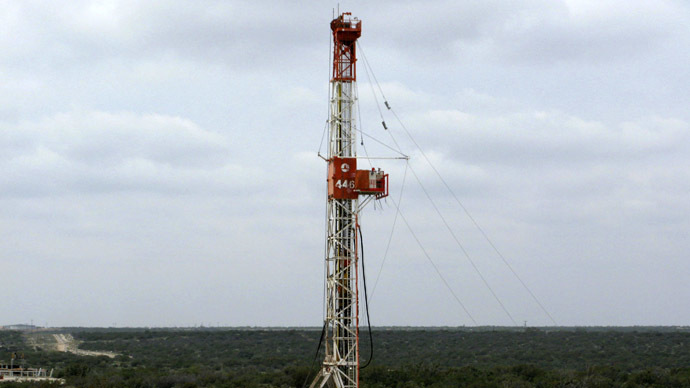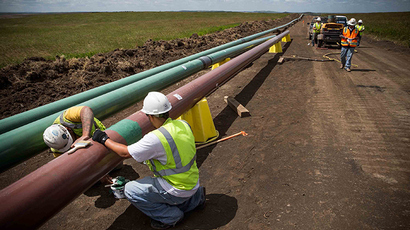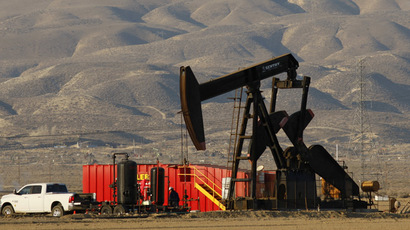Living near fracking sites deteriorates health - study

Those who live in close proximity to fracking sites exhibited a greater likelihood to suffer skin and respiratory problems than those who lived farther away from natural gas wells, according to a new study of Pennsylvania’s Marcellus shale region.
The study, “Proximity to Natural Gas Wells and Reported Health Status: Results of a Household Survey in Washington County, Pennsylvania,” published this week in Environmental Health Perspectives, found that people who reside within one kilometer of a hydraulic fracturing, or fracking, well were significantly more likely to endure ill health effects than those living two kilometers away.
A Yale-based research team addressed 492 individuals in 180 households in southwestern Pennsylvania, where the Marcellus shale has attracted its fair share of the fracking surge seen throughout the United States. Washington County alone has 624 active gas wells, 95 percent of which have been used for fracking.
To unleash oil or natural gas, fracking requires blasting large volumes of highly pressurized water, sand and other chemicals into layers of rock. The contents of fracking fluid include chemicals that the energy industry and many government officials will not name, yet they insist the chemicals do not endanger human health, contradicting findings by scientists and environmentalists. Toxic fracking wastewater is then either stored in deep underground wells, disposed of in open pits for evaporation, sprayed into waste fields, or used over again.
Fracking has been linked to groundwater contamination, an uptick in earthquakes, exacerbation of drought conditions and a host of health concerns for humans and the local environment.
Notwithstanding those relationships, however, the Yale researchers said their study started because of the lack of information available regarding the effects of fracking.
“Little is known about the environmental and public health impact of unconventional natural gas extraction activities including hydraulic fracturing that occur near residential areas,” they wrote.
“While much of the hydraulic fracturing process takes place deep underground, there are a number of potential mechanisms for chemicals used in the fracturing process as well as naturally occurring minerals, petroleum compounds and other substances of flow back water to enter drinking water supplies. If contaminants from hydraulic fracturing activities were able to enter drinking water supplies or surface water bodies, humans could be exposed to such contaminants through drinking, cooking, showering and swimming," they wrote.
The researchers added that those in the vicinity of fracking operations could be subject to airborne contaminants via flaring, use of diesel equipment and fluid leakage. They also found evidence that noise and other activity surrounding the drilling sites frustrated the health of the study’s respondents.
“While these results should be viewed as hypothesis generating, and the population studied was limited to households with a ground-fed water supply, proximity of natural gas wells may be associated with the prevalence of health symptoms including dermal and respiratory conditions in residents living near natural gas extraction activities. Further study of these associations, including the role of specific air and water exposures, is warranted,” they concluded.
The researchers also warned of future problems that the US fracking bonanza could have. Since many of the fracking wells are only a few years old, they wrote that “one would not yet expect to see associations with diseases with long latency, such as cancer. Furthermore, if some of the impact of natural gas extraction on ground water happens over a number of years, this initial survey could have failed to detect health consequences of delayed contamination.”














